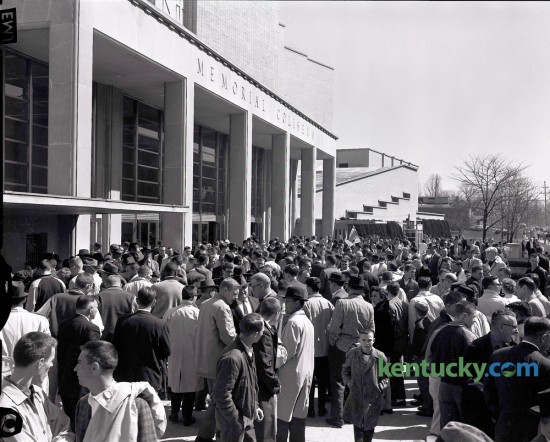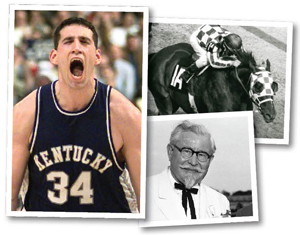October 23, 2025
Eddie Sutton and Bobby Knight, 1988
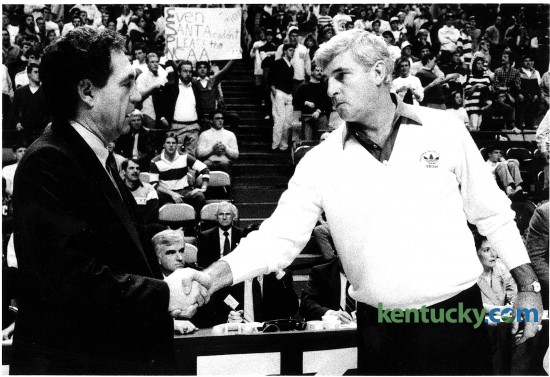
University of Kentucky coach Eddie Sutton, left, shook hands with Indiana University coach Bobby Knight before the Dec. 20, 1988, game at Rupp Arena in Lexington. The Hoosiers would win the game, 75-52, and only one UK player would score in double figures (Chris Mills, with 22 points). During his 29 years at Indiana, Knight had a 15-18 record against UK, including a 1-2 mark against the Cats in the NCAA Tournament. For the second time in five years, Kentucky and Indiana — in a long-running border rivalry that is no more — will play on college basketball’s biggest stage, the NCAA Tournament. The two schools played each other annually from 1969-70 until 2011-12, when the series was shelved because of a scheduling dispute. Photo by Michael Malone | Staff
Sears advertisement, 1948
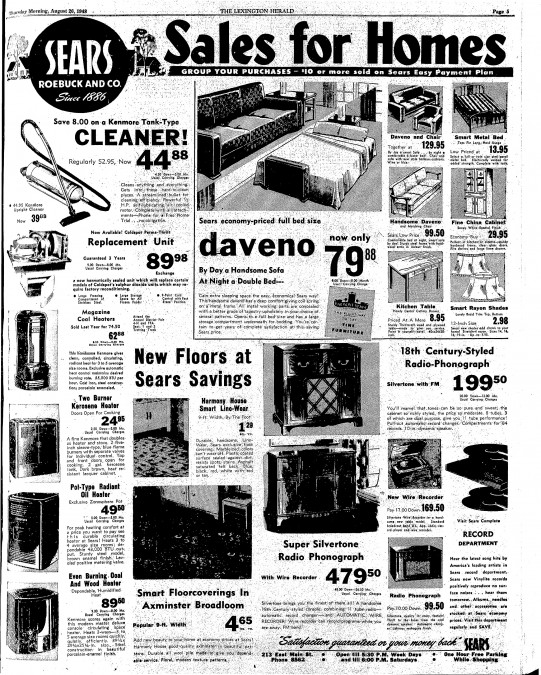
A full-page ad for the Sears Roebuck and Co. that ran in the Aug. 26, 1948, Lexington Herald. At the time, Lexington had one Sears store, at 213 East Main Street. It is now the site of Chase Tower. Sears had an eight-decade history in Lexington that ended in 2013 with the closing of Sears at Fayette Mall. Recently, a Sears Hometown — an outlet store that was spun off from Sears — opened in Lexington on Saron Drive off Tates Creek Road. Click on the image for a closer look.
Kentucky first-round NCAA loss, 2008
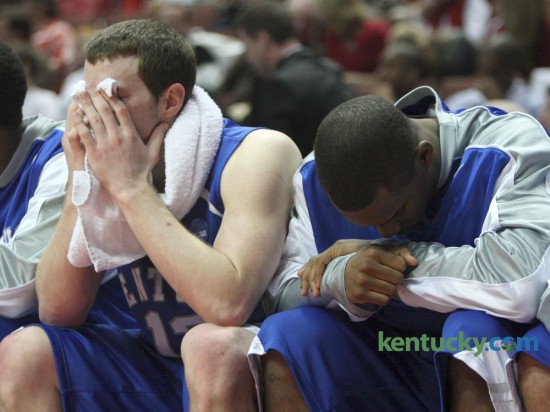
Kentucky’s Michael Porter, left, and Jodie Meeks showed their disappointment at the Cats’ impending loss to Marquette in the first round of the NCAA tournament on March 20, 2008, at the Honda Center in Anaheim, Calif. The Wildcats, under first-year coach Billy Gillispie, lost the game 66-74 and finished the season 18-13. Kentucky opens play Thursday night in a NCAA first-round game against Stony Brook in Des Moines, Iowa. Photo by David Stephenson | Staff
Dudley School building, 1941
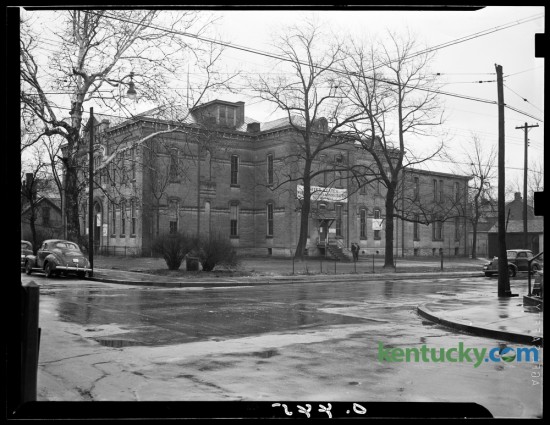
The old Dudley School property on Jan. 22, 1941, on the northeast corner of Mill and Maxwell Streets, had been sold at public auction by the city board of education. The structure was built in 1881. Published in the Lexington Herald on Jan. 23, 1941. Herald-Leader Archive Photo
Ware farm development, 1973
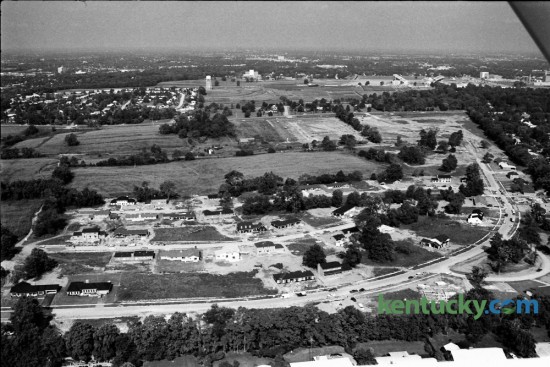
Aerial view of the Ware farm in late August 1973. It was one of the last remaining pieces of undeveloped property in Fayette County’s urban service area. The curving road at the bottom of the photo is Turkey Foot Road, which leads to Tates Creek Pike, running left to right near the top of the photo. Commonwealth Stadium, which opened in September 1973, is seen at the top right. Photo by John C. Wyatt | Staff
Kentucky’s NCAA Championship loss to Texas Western, 1966
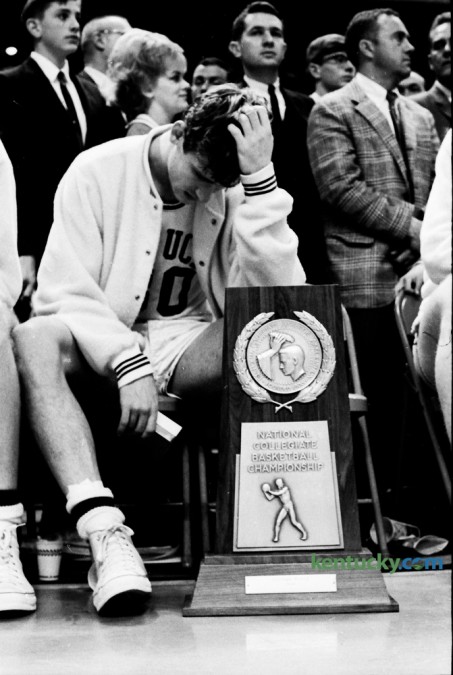
Kentucky guard Tom Kron slumped in his chair in front of the runner-up trophy during presentations after Kentucky was upset by Texas Western in the NCAA championship game on March 19, 1966 in College Park, Md. March 19, 2016 marks the 50th anniversary of the game that would come to be seen as a civil rights milestone in college basketball: Texas Western was the first NCAA champion to start five black players while Kentucky had never had one. The game was a dramatic wake-up call to universities across the South that they would have to accept black players. Photo by Jeff Watkins | Staff
Main Street, downtown Lexington, 1950
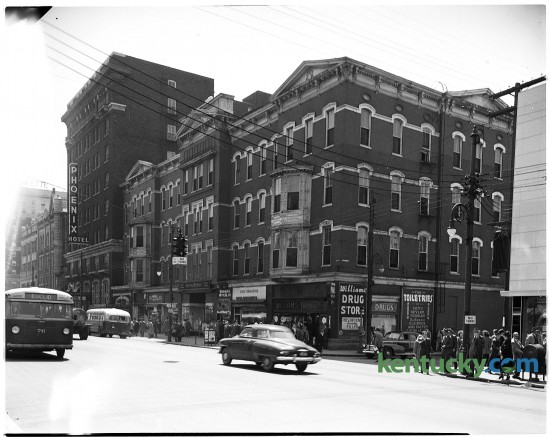
The 100 block of East Main Street in downtown Lexington at Limestone on March 8, 1950. That corner, once dominated by the Phoenix Hotel, is now the site of Phoenix Park, the Central Library and Park Plaza apartments. Here is a picture of the same view taken five years earlier in 1945. Herald-Leader Archive Photo
Kentucky in SEC tourney, 1996
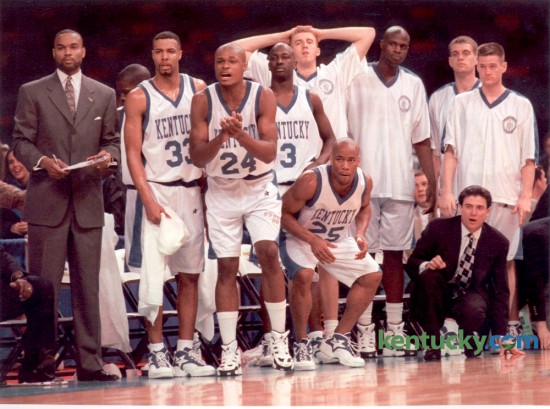
The UK basketball team, with coach Rick Pitino, lower right, intently watched the action on the court during the Cats’ 95-75 win over Arkansas in the SEC Tournament on March 9, 1996, in New Orleans. UK ended up losing in the title game the next day to Mississippi State, 84-73, ending a run of four straight SEC tournament championships. From left are assistant coach Winston Bennett, Ron Mercer, Antoine Walker, Allen Edwards, Oliver Simmons, Anthony Epps, Nazr Mohammed, Jason Lathrem and Cameron Mills. Also on the team that year were Derek Anderson, Jeff Sheppard, Tony Delk, Wayne Turner, Mark Pope, Walter McCarty and Jared Prickett. Seven players from this team were drafted by NBA teams, and nine ended up playing in the league. Photo by Frank Anderson | Staff
Opening of Safety City, 1990
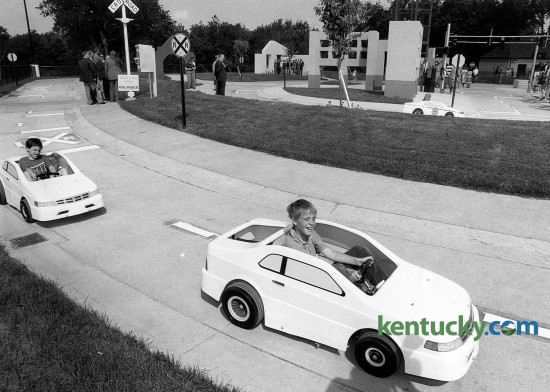
The opening of Safety City, Lexington’s make-believe city that teaches children about automobile and pedestrian safety, on May 23, 1990. The community project includes a network of two-lane streets that is realistic in detail, with curbs, sidewalks and pedestrian crossings. More than 2,000 children from Central Kentucky visit Safety City each school year. The city is a partnership between Eastern Kentucky University and the Lexington Police Department. A new fleet of electric cars was recently purchased with the help of a $49,000 donation from Toyota, replaced an aging fleet that had dated to Safety City’s opening in 1990. Photo by Stephen Castleberry | Staff

